Terrain
Type of resources
Available actions
Topics
Keywords
Contact for the resource
Provided by
Years
Formats
Representation types
Update frequencies
status
-
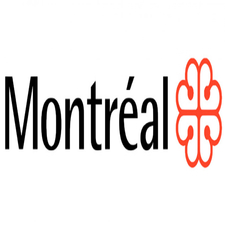
Inventory of buildings and land subject to the right of pre-emption. The right of pre-emption allows the City of Montreal to buy certain buildings or land in priority over any other purchaser in order to carry out projects for the benefit of the community.**This third party metadata element was translated using an automated translation tool (Amazon Translate).**
-
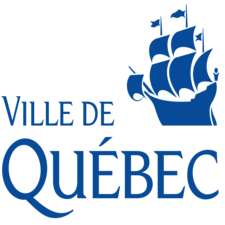
Land use mapping.**This third party metadata element was translated using an automated translation tool (Amazon Translate).**
-
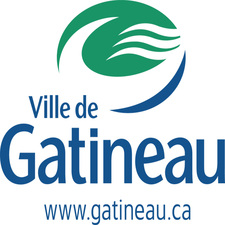
Mass movement**This third party metadata element was translated using an automated translation tool (Amazon Translate).**
-
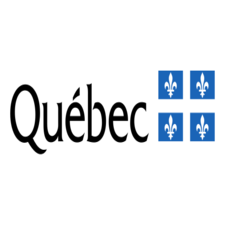
Digital terrain models offer a representation of the relief south of the 52nd parallel, in the form of an elevation matrix. This matrix makes it possible to visualize the territory in perspective and to perform three-dimensional spatial analyses, using appropriate software. A module specialized in three-dimensional data processing, such as 3D Analyst or Spatial Analyst, is required to visualize the digital altitude model in three dimensions. This digital altitude model (10-meter pixel matrix) is obtained by processing altimeter data (level curves and elevation points) from ** [topographic databases on a scale of 1/20,000] (https://www.donneesquebec.ca/recherche/fr/dataset/cartes-topographiques-a-l-echelle-de-1-20-000) **.**This third party metadata element was translated using an automated translation tool (Amazon Translate).**
-
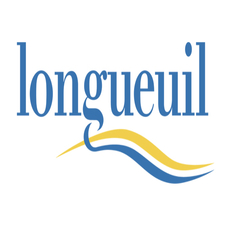
Cartographic dissemination of data on socio-economic land use for the territory of the City of Longueuil.**This third party metadata element was translated using an automated translation tool (Amazon Translate).**
-

__The link: * Access the data directory* is available in the section*Dataset description sheets; Additional information*__. As part of the provincial LiDAR sensor data acquisition project, a topographic humidity index or *Topographic Wetness Index* (TWI) was produced from the digital terrain model derived from aerial LiDAR (*Light Detection and Ranging*). The matrix layers thus produced provide information on the potential for water accumulation on the territory as a function of the slope and accumulation at a given pixel.**This third party metadata element was translated using an automated translation tool (Amazon Translate).**
-

These digital terrain models (DTM) offer a regional numerical representation of Quebec's relief based on altimetric (altitude) and planimetric (rectangular or geographic) data. They are the result of a collaboration between the Ministry of Natural Resources and Forests (MRNF) and Natural Resources Canada (NRCan) within the framework of the Agreement to produce an up-to-date digital map of northern Quebec and the creation of the product “National Hydro Network (RHN)” for the territory of Quebec. When integrated into a geographic information system, these models allow the implementation of multiple types of spatial analyses such as natural risks, landscape analysis, infrastructure implementation, etc. The MNTs are obtained as a result of hypsometric and hydrographic data processing that uses the concept of hydro-coherence consisting in interpolating altimetric values by ensuring a connected drainage network and an accurate representation of ridges and watercourses. The oriented RHN filament makes it possible to grade lakes and to control the altimeter descent of watercourses. The final product is a quality portrait of relief on a scale of 1/50,000. DNTs provide altitude values that are based on a grid with a resolution of 0.324 arcseconds in geographic coordinates, which corresponds to a resolution of about 10 meters in the field.**This third party metadata element was translated using an automated translation tool (Amazon Translate).**
-

__The link: * Access the data directory* is available in the section*Dataset description sheets; Additional information*__. Hydrographic derivatives from LiDAR (Light Detection and Ranging) were produced as part of the provincial LiDAR sensor data acquisition project. These products provide information on the geographical position of water flow beds on the territory as well as their nature (permanent or intermittent watercourse). These layers represent the path that water should take depending on the topography. It is therefore a potential flow bed that does not take into account the nature of the surface deposit or underground pipes. These vector layers are preliminary and do not replace reference hydrographic layers such as the Quebec Hydrographic Network Geobase (GRHQ). They are primarily used to support forest operations. These layers will also be improved over the coming years thanks to a collective effort by two ministries, namely the Ministry of Natural Resources and Forests (MRNF) and the Ministry of the Environment, the Fight against Climate Change, and Wildlife and Parks (MELCCFP). Data on potential flow beds are distributed, as of March 2022, by water drainage unit (UDH), a division that respects the natural boundaries of the watershed. This division uses the same codes and approximately the same spatial limits of the UDHs of the GRHQ. Data for each UDH is available in Geodatabase (GDB) or GeoPackage (GPKG) format.**This third party metadata element was translated using an automated translation tool (Amazon Translate).**
-

Geospatial vector data for the division of properties in the agglomeration of Montreal containing general information on property assessment units, including the codification of use (CUBF), approximate dimensions and registration number. IMPORTANT: This division has no legal value and should not be confused with cadastral division.**This third party metadata element was translated using an automated translation tool (Amazon Translate).**
-

Please note that a web service is currently under development and will be launched in the fall of 2025. Stay on the lookout! ## #Avertissement :### ### #Le broadcaster cannot guarantee the accuracy, precision, or completeness of the data nor can it be held responsible for the conclusions that arise from their use. This data has no legal value. #### The Geobase of the Quebec Hydrographic Network at High Resolution (GRHQ-HR) offers an up-to-date representation of the hydrographic network with very high precision (scale of 1/2,000). This repository, produced from lidar data, is offered by hydrographic division unit (UDH). The deployment of this geobase is carried out progressively by levels of completeness (NC). Ultimately, it will cover the territory of southern Quebec. During the deployment phase of the repository, [the Quebec Hydrographic Network Geobase (GRHQ)] (https://www.donneesquebec.ca/recherche/fr/dataset/grhq), the GRHQ-HR as well as [potential flow beds] (https://www.donneesquebec.ca/recherche/dataset/lits-d-ecoulements-potentiels-issus-du-lidar) from the lidar will be simultaneously available on Data Quebec for this portion of the territory. The GRHQ-HR includes a 3D linear geometric network, which represents the continuity and direction of flow in all types of aquatic entities (streams, lakes, wetlands, etc.). This network is created by modeling potential flow beds and completed by central flow lines (simplified representation of hydrographic surfaces in central lines). This geobase is part of a strategy to update the cartographic map of Quebec's hydrography. It was carried out in partnership with the Ministry of the Environment, the Fight against Climate Change, Wildlife and Parks (MELCCFP). # #Caractéristiques UDH completion levels## Each level of completeness characterizes the level of work, editing, validation, and descriptive content of the datasets. Thematic and toponymic data will enhance the datasets. ### #NC -1 (primary geometric network) #### * Potential and filamentary flow beds derived from hydrographic, oriented, and topological surfaces. * Priority level defined (allows network analyses). * Presence of certain basic attributes (sustainability, network connection, accumulation of flows, Strahler and Horton orders, distance from upstream, distance from downstream). * Linear reference system (road numbers, vertex M coordinates). * Hydrographic surfaces of the GRHQ on a scale of 1/20,000 (2D). * Presence of some toponyms as an attribute. * Hydrocoherent digital terrain models (GeoTIFF). * Flow accumulation matrices (GeoTIFF). * Flow direction matrices (GeoTIFF). ### #NC -2 (enhanced geometric network) #### * NC-1 features. * Update of hydrographic surfaces by photogrammetry. * Correction of errors in the path of potential flow beds and update of downstream filamentaries. * Partial addition of thematic hydrographic data (dams, falls, reefs, islands, wetlands, rapids). * Lidar survey date index. * Topological nesting of matrices. * Update of hydrocoherent numerical terrain models. * Update of flow direction matrices. * Update of flow accumulation matrices. ### #NC -3 (thematic bonus) #### * Characteristics of the NC-2. * Hydrographic themes completed (breakwaters, quays). * Addition of toponyms. ### #NC -4 (improvement of toponymic content) #### * NC-3 features. * Continuity of toponymic data on geometries. * Addition of named entities. **This third party metadata element was translated using an automated translation tool (Amazon Translate).**
 Arctic SDI catalogue
Arctic SDI catalogue